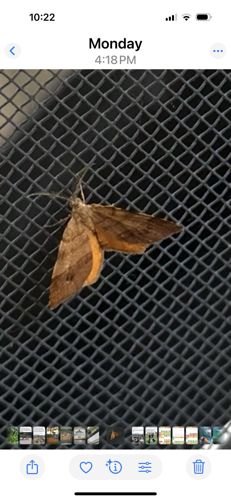Moth (likely a type of Noctuid Moth)
Scientific Name: Difficult to determine with certainty from the image alone, but likely within the Noctuidae family. An exact species name would require more detailed morphological examination.
Order & Family: Order: Lepidoptera, Family: Noctuidae (Owlet Moths or Noctuid Moths)
Size: Generally, moths in the Noctuidae family can range from small to medium-sized, with wingspans typically from 20 mm to over 60 mm (0.8 to 2.4 inches).

Natural Habitat
Moths can be found in a wide range of habitats, including forests, woodlands, grasslands, agricultural areas, gardens, and urban environments. Their specific habitat depends on the species and the availability of their host plants for their larval stage.
Diet & Feeding
Adult moths often feed on nectar from flowers, juices from rotting fruit, tree sap, or are non-feeding. The larval stage (caterpillar) typically feeds on plant foliage, sometimes specific host plants.
Behavior Patterns
Moths are typically crepuscular or nocturnal, meaning they are active during twilight or night hours. They are attracted to light. The larvae (caterpillars) of various moth species can have distinct behaviors, from solitary feeding to communal living. Adult moths primarily focus on reproduction.
Risks & Benefits
Risks: Some moth larvae can be agricultural pests, damaging crops or garden plants. A few species are textile pests (e.g., clothes moths). Benefits: Moths are important pollinators, especially for night-blooming flowers. They are also a significant food source for many animals, including birds, bats, and other insects, playing a crucial role in the food web.
Identified on: 8/17/2025